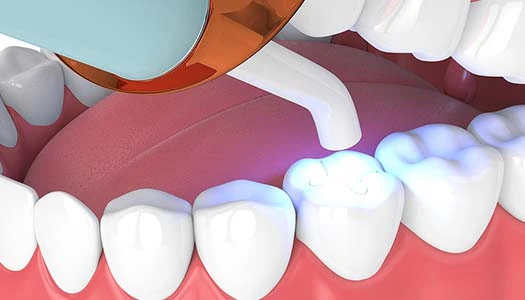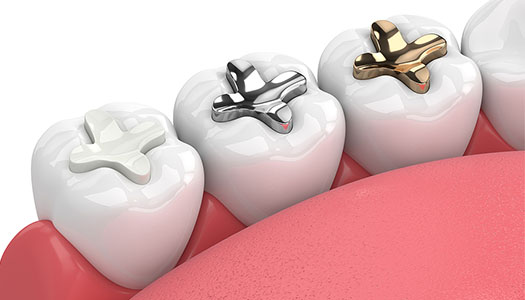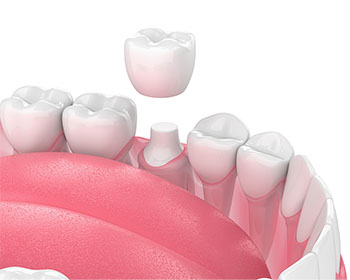Fillings
Dental fillings are used to restore missing teeth structure by filling in the cavity (hole). Cavities are usually the result of tooth decay, but other causes include cracked/broken teeth or teeth that have been damaged by nail-biting, tooth grinding or by another form of trauma. Typically, the dentist will remove the decayed/defective part of your tooth and then fill the area with the most suitable filling material.
Dental restorations can be divided into two main kinds: direct and indirect restoration.
Direct restoration
Direct restoration is performed in the surgery by the dentist. The types of paddings you can have are essence or amalgam fillings or white fillings (Composite) are made from compound resin or glass ionomer material. Amalgam fillings bear further tooth to be prepared as they need mechanical retention in the tooth. They are useful in numerous situations and are very robust. White fillings require less tooth to be prepared as they bond to the teeth. Please ask your dentist for further information!

Indirect restoration
Indirect restorations are permanent or semi-permanent fixed restorations that cannot be made inside the mouth. They are made outside of the mouth by a dental laboratory using the dental impressions of the prepared tooth and usually consist of inlays, crowns, bridges and veneers.
Old fillings, regardless of colour, are not indestructible. They can fall out, crack or leak, especially if decay develops around them. The good news is that we can repair your fillings in all of these cases.
Indirect restoration
Inlays
A dental inlay is an indirect dental restoration that can be used when a cavity is too large for a simple filling and can increase a tooth’s strength by up to 75%. It is made from a solid, custom-formed material. Depending on the cavity size and depth, inlays are either cast into shape with ceramic, gold or composite materials. They are designed to help restore the natural appearance, shape and function of your tooth as they can create a more natural biting shape than a filling. They are also ideal for restructuring the shape of your tooth.
Inlays are made outside of your mouth in a laboratory and are moulded to fit into your tooth, prepared for by your dentist, following the removal of an old filling or decay of the tooth.
After the inlay is fitted, you will be advised to carry out regular interdental cleaning, such as flossing and using an interdental toothbrush to tackle the difficult areas to reach and clean. Basic oral care practices will also be necessary, including brushing twice a day and rinsing with mouthwash to kill bacteria.
0% finance is available on any treatment over £500*
Crowns
A crown or ‘cap’ is an artificial restoration and protective covering placed over a tooth and held in position by dental adhesive or cement. Once cemented in place, the crown will completely cover the existing damaged tooth about the gum line.
Dental crowns are used to solve different dental problems including:
- To protect and restore broken teeth that suffered from large areas of decay or fracture
- To provide extra support to a dental bridge
- To cover an existing dental implant
- To protect a root treated tooth
Here at Surrey Dental Practice, we are keen to make sure patients get the treatment best suited to their needs. We offer crowns in a variety of materials, including metal, resin, ceramics (porcelain) PFM, Emax and Zirconia. We will endeavour to provide you with the best aesthetic and fully functional crowns.
0% finance is available on any treatments over £500*

